Contents
Preparation for the summer season always begins the same way – with the preparation of seeds and planting seedlings. Despite the fact that the seeds of some crops can be planted immediately in open ground, most still require careful care for young seedlings. Eggplant is no exception. We will talk about how to grow eggplant for seedlings at home in this article.
Seed selection
Eggplants that will be seeded indoors or outdoors should be grown from proven, quality seeds to avoid most diseases and growth problems. Therefore, for a future rich harvest, it is important to properly process the seeds before planting.
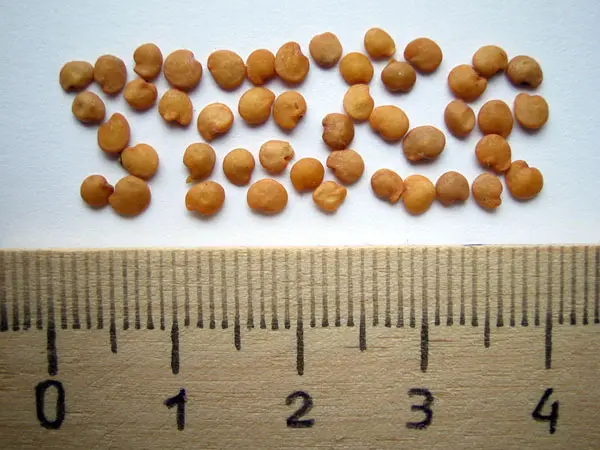
First of all, check eggplant seeds for germination. This is easy to do: take 10-12 seeds, soak in warm water for 24 hours, and after they swell, wrap in a damp cloth for another 6-7 days. During the test, you need to constantly moisten the fabric and maintain a stable temperature. Upon completion of the procedure, count how many seeds have sprouted, if more than half – you can safely take them into circulation, if less, then choose another variety or another manufacturer.
In addition to germination, when choosing an eggplant variety, you should learn about a few more parameters of an adult vegetable. Of course, first of all, evaluate the eggplant ripening period. If all types of eggplant are suitable for greenhouses, then late-ripening varieties should not be chosen for an open-air plot, since they are more likely not to live to this time or suffer from infections and insects.
The next step is productivity. Remember that the most productive varieties require more care and attention, both at the stage of growing seedlings and during growth in the garden. For a good harvest of some varieties, a certain composition of the soil will be required, and if it is not available on your site, then it is better to choose a less productive, but at the same time suitable variety for the given conditions.
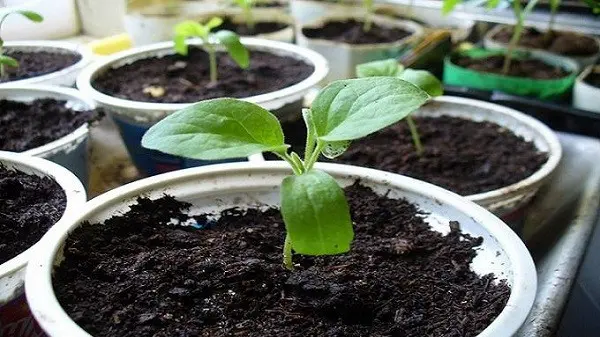
Consider also the resistance of the plant. If the selected variety is very vulnerable to soil diseases, fungal flora, demanding environmental conditions, then think twice before planting it – it will take a lot of effort to grow it.
Lastly, evaluate the keeping quality of the variety. It depends on how long the vegetables can lie without processing, which means how much time you will have in stock from harvesting to cooking. Often, this characteristic also affects the taste properties of the fruit, some acquire a bitter aftertaste during long-term storage.
Video “Planting eggplant.”
This video describes in detail the process of planting eggplant seedlings at home.
Ground
Being extremely picky about the soil composition of plants, eggplants require almost pharmaceutical precision in soil preparation. Three “pillars” on which this balance rests: fertility, friability, neutral acidity. Why exactly this composition? Eggplants are very fond of moisture, but at the same time, stagnation of water in the soil leads to rotting of the root system. Therefore, it is very important that the plant can easily absorb the required amount of liquid, and the rest goes into the soil. The fertility of the soil hardly raises questions – in order to get a rich harvest, it is necessary to nourish the plants well already at the stage of growing seedlings. Neutral acidity contributes to better absorption of microelements from the soil and applied fertilizers.
At home, preparing the right soil mixture is very easy. You will need the following components: humus, peat, baking powder, leafy soil. Of course, you can buy the soil mixture in the store, but it is much more reliable to cook it yourself.
Mix 1 part sod, 1 part peat and 1 part river sand, mix well so that the ingredients form a single mass. Add to the mixture a solution of 20 g of superphosphate, 15 g of potassium sulfate, 10 g of urea, diluted in 10 liters. After the soil mixture dries out, you can use it for planting seeds.
The second soil mixture recipe: mix equal parts of humus, peat and sod. Mix 10-12 g of superphosphate and 0,5 l of wood ash. Mix thoroughly and the mixture is ready to use.
Any soil must be disinfected to protect eggplant seeds from diseases in the early stages of development. There are several ways to till the soil: calcining in the oven, freezing in the freezer, steaming, digging with a solution of potassium permanganate.
Sowing
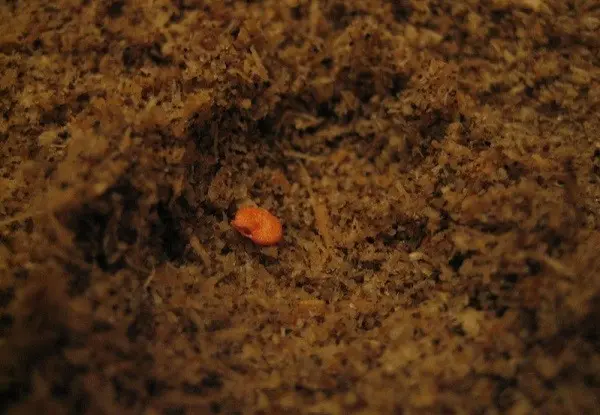
Before sowing the seeds in the prepared soil mixture, they must be decontaminated. Often, growers perform this procedure before packing the seeds, but sometimes it’s better to be safe than to forfeit the harvest. Place the selected seeds in a rich pink solution of potassium permanganate for half an hour. If you do not have potassium permanganate, then heat the water to 50 ° C, put the seeds in cheesecloth, making a bag out of it, put it in water for half an hour. After treatment, place them in cold water for 2-3 minutes.
The time for planting eggplant for seedlings depends on the variety, but most often this happens from mid-February to mid-March. Fill the planting containers with prepared soil, moisten it moderately with warm water. Deepen each seed by 1-1,5 cm. It is recommended to plant eggplants in separate cells so that they do not get tangled with roots and do not interfere with each other’s growth. Cover the containers with plastic wrap to create a stable temperature and maintain humidity. For stable growth, eggplant seedlings need an air temperature of up to + 27 ° C.
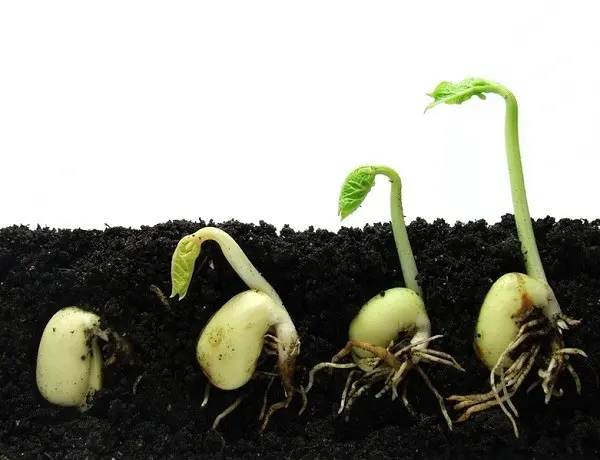
Once the seeds germinate, they can be grown like any other seedling at home – providing plenty of light (using fluorescent lights, for example), regular watering, and maintaining a stable temperature. A few weeks before transplanting into the ground in the beds, the seedlings must be hardened – gradually lower the air temperature to 14-18 ° C. So it will be easier to grow plants on the ground, since their immunity will be higher.
Care of seedlings
Growing seedlings at home is easy, not much more difficult to care for. Knowing the weak and strong points in the growth process of eggplant, you can speed up the cultivation of seedlings for several weeks, having vegetables ready for a calm transplant.
First of all, you should make sure that the air temperature is stable both during the day and at night. It is not recommended to grow seedlings on open balconies or on glazed loggias without insulation. Low temperatures significantly slow down the germination and development of seedlings, moreover, it makes them weak and painful. During the first or second week, the air temperature should not fall below +20°C during the day and below 16-18°C at night. So you create comfortable, safe conditions for germinating seeds, helping them get stronger. From the third week, you can slightly increase the difference between day and night temperatures to simulate the conditions that await the vegetable in the garden. In this way, you harden the plant, providing greater resistance to temperature changes.
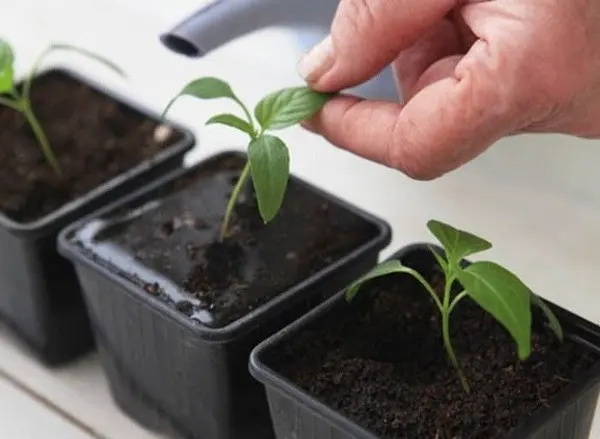
It is important to monitor watering. Train yourself to water the plants with water that is at least as warm as the air (and in garden beds as warm as the ground). There are two options for watering: spray from a spray bottle or pour water directly into containers. Spraying has a number of advantages – the earth is not washed out, the roots or seeds are not exposed. However, there are also disadvantages: the higher the air temperature and the more active the sun, the more likely it is to burn the eggplant leaves, on which drops of water remain. Therefore, try to spray the liquid without touching the leaves and stems. When watering directly into a container, distribute the liquid around the perimeter of the container, not pouring directly under the stem. Maintain moderate soil moisture – eggplants equally do not like drought and high humidity.
Growing seedlings at home requires careful work with lighting. In February-March, seedlings will not have enough natural light, since daylight hours are still quite short. The lack of light negatively affects the growth of eggplant, leading to wilting of the leaves, slowing down the vegetative processes, as well as greater vulnerability to various kinds of diseases. You will have to provide a sufficient amount of light with your own hands – using fluorescent lamps or specialized fitolamps. Additional lighting will be needed for a period of 9 to 12 hours every day. Lamps should be installed at a distance of 50-60 cm above the plant.
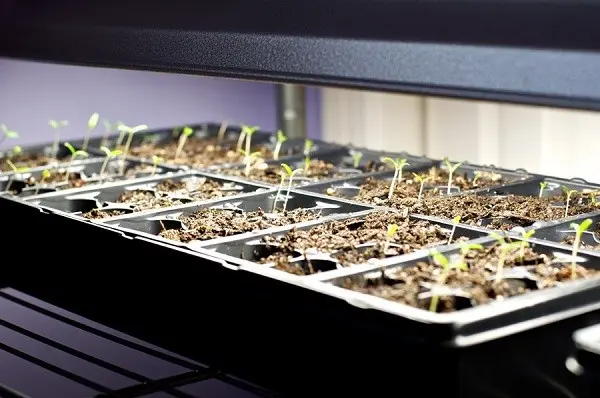
If desired, you can pick plants after two or three leaves have formed on them. This option is suitable for those cases when you grew seedlings in a common container and now want to plant them in separate ones. New containers should have drainage holes so that moisture does not stagnate. Fill them with the same soil that was used for the first planting, pour over the infusion of wood ash. The preparation of the new container is completed. Moisten the ground a few hours before transplanting to make it easier to remove the seedlings. Place the seedlings in new containers, sprinkle with earth on top of the cotyledon leaves.
Even taking into account the fact that fertilizers are added to the soil mixture, they will not be enough for the normal development of eggplant seedlings. Therefore, seedlings will have to be fed several times in order to achieve stable growth.
The first feeding is carried out on the 10-11th day, if you did not pick and on the 11-13th, if you did. Use any fertilizer that is high in phosphorus to encourage the development and strengthening of the eggplant root system.

If the seedlings develop normally, then you can no longer feed them until they are transplanted into the ground in the beds. In case plants develop slowly or you want to further strengthen them, use fertilizers with a high content of phosphorus and potassium to build up green mass. Also, every one and a half to two weeks, you can water them with infusion of ash (0,5 l of ash is infused in 10 l of water for 2-3 days) or a yeast solution (10 g of dry yeast is diluted in 10 l of warm water, infused for 2-3 days , diluted 1:10 before watering). This will provide the plants with all the nutrients they need to promote healthy growth.
The growth period of eggplant seedlings varies from variety to variety, but on average, it takes 60-75 days for the full development of a seedling suitable for transplantation.
Video “The secret of the eggplant harvest.”
All the tricks for growing eggplant are described in the video.









